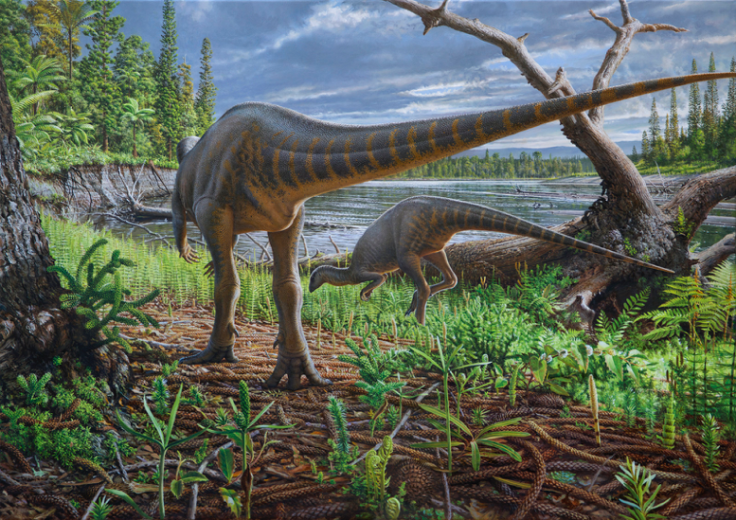New turkey-sized dinosaur discovered in ancient Australian river bed
Previously unknown species found in 113-million-year-old rocks in south-eastern Australia.

The remains of a previously unknown turkey-sized dinosaur have been uncovered in 113-million-year-old rocks in south-eastern Australia.
Researchers found a fossilised tail and foot bones of a herbivorous animal which has been named Diluvicursor pickeringi after David Pickering, a museum manager who contributed significantly to Australian palaeontology but who died just over a year ago.
The find sheds light on a group of small, bipedal, herbivorous dinosaurs known as ornithopods which thrived in the great rift valley that once existed between Australia and Antarctica.
"Diluvicursor shows for the first time that there were at least two distinct body-types among closely related ornithopods in this part of Australia," said Matt Herne, lead author of the new study, published in the journal PeerJ.
"One was lightly built with an extraordinarily long tail, while the other, Diluvicursor, was more solidly built, with a far shorter tail. Our preliminary reconstruction of the tail musculature of Diluvicursor suggests this dinosaur was a good runner, with powerful leg retracting muscles," he said.
The dinosaur's skeleton was first discovered in 2005 by volunteer prospecter George Caspar. It was jutting out of a rock platform near an area called Eric the Red West near Cape Otway in southern Victoria.
The site, which is rich in fossils, was once the location of a powerful river which transported tree stumps, logs and other woody debris. It appears that the dinosaur became trapped in a log jam at the bottom of the river and died.
"Much of the fossil vertebrate material from Eric the Red West has yet to be described so further dinosaurs and other exciting animals from this site are now anticipated," Herne said.





















